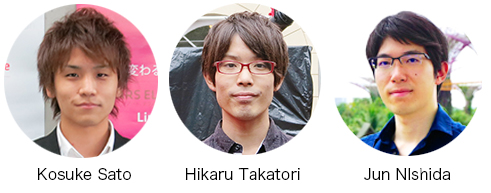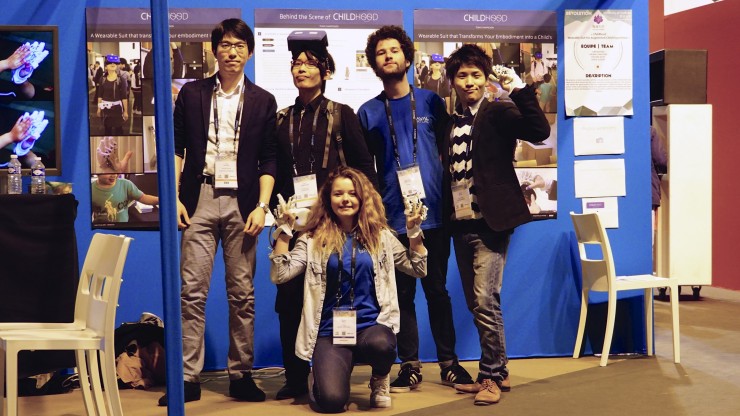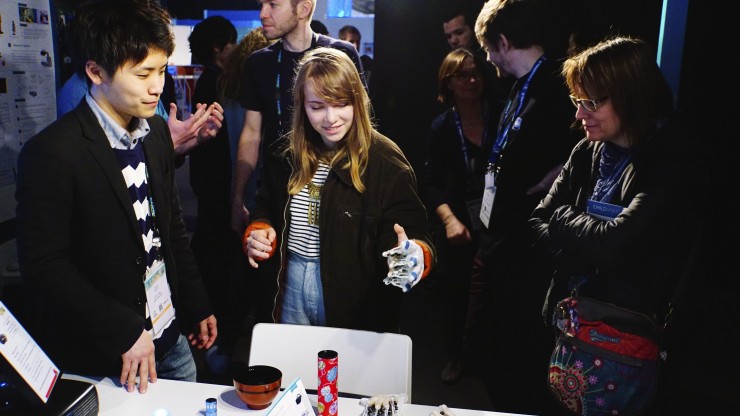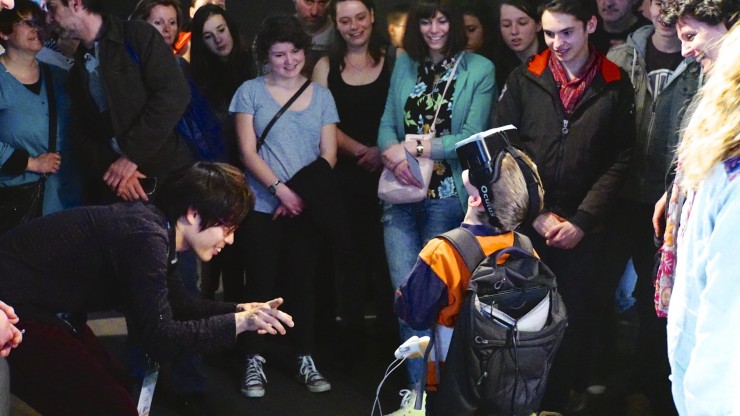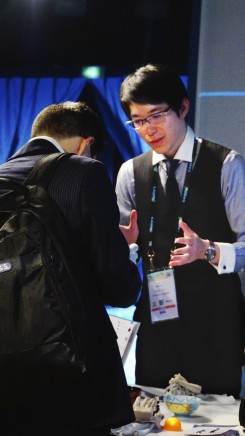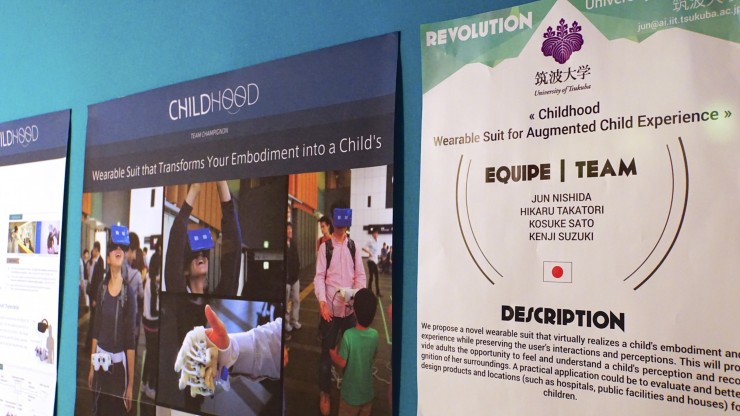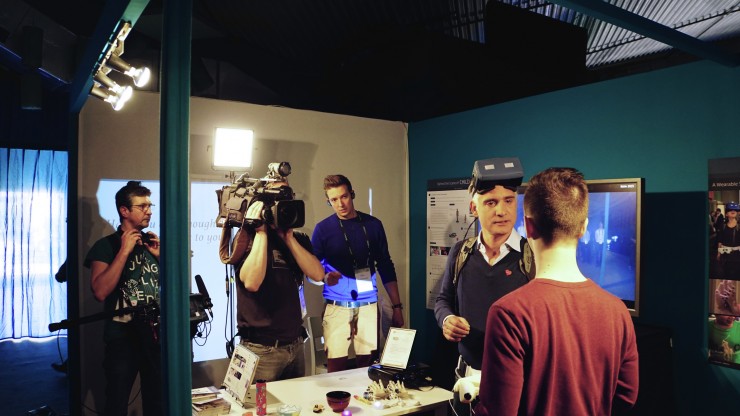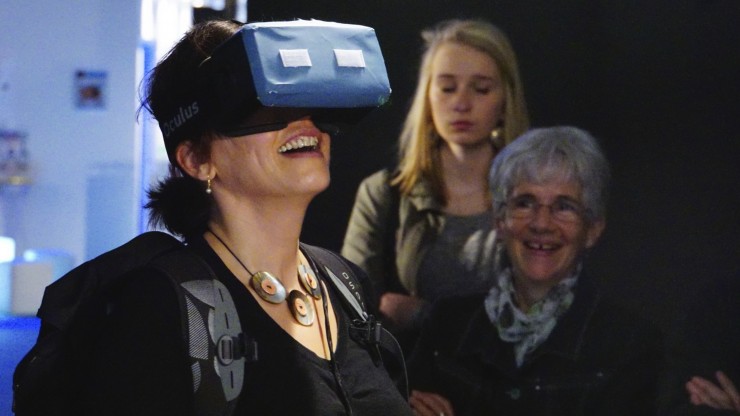Report on exhibiting at LAVAL VIRTUAL 2015: 17th International Conference and Exhibition of Virtual Technologies and Uses (Laval, France)
EMP second-year students Kosuke Sato, Hikaru Takatori, and Jun Nishida were invited to exhibit their work “CHILDHOOD” at LAVAL VIRTUAL 2015, the 17th International Conference and Exhibition of Virtual Technologies and Uses, held April 8-12, 2015, where the work won the prize for its category. We asked Sato, Takatori, and Nishida for a report on their experiences and impressions of their successful exhibition at this event in an international venue in France, which attracted about 14,000 visitors from across Europe.
EMP second-year student Kosuke Sato
Just like when exhibiting the work in Japan, the demonstration of “CHILDHOOD” at ReVolution attracted a very large number of people to the booth, and they seemed very interested in the work. It was so popular that the 1000 pamphlets we had prepared for the exhibition proved not to be enough, as a wide range of people from professionals to members of the general public took the opportunity to experience the demonstration. Although we explained the exhibit to visitors and interacted with them mainly in English, on the weekend in particular many visitors were able to speak French only, and this proved quite a challenge, but we were able to complete the five-day exhibit with no serious problems as we operated the booth while communicating and cooperating with local support staff. Since this was our first demonstration overseas, I was worried most of all about how the work would be received, but as it turned out we were able to communicate thoroughly all aspects of the exhibit, including not just the entertaining aspect of returning to CHILDHOOD but also the way it could contribute as a tool for furthering understanding of children’s actions and emotions, and I think that this experience will prove useful to our future vision.
EMP second-year student Hikaru Takatori
Since the start of the project, I have been in charge of designing the viewpoint translator that transforms an adult’s point of view to that of a child’s while maintaining natural body movement. In this demonstration, I explained the new viewpoint translator implemented with the result of our past experiences. I think that the opportunity to have numerous people overseas experience this work is highly meaningful as a means of outreach to the general public concerning the results of our research. During the three-day Professional Days period in particular, we were asked many questions about business prospects, such as whether we planned to commercialize the project and what kind of customers we expected to use it. I got the feeling that from now on we might need to consider actively the connections between all our research—not just this project alone—and business applications to people’s lives. I would like us to use the evaluation received in this exhibition, in the form of the category prize, as we correct newly discovered problems in preparation for the next exhibition at IVR in June.
EMP second-year student Jun Nishida
At Laval Virtual we were able to have more than 1000 people take our work in their hands and have it experienced by a wide range of people including researchers from businesses and universities, representatives of television, newspapers, and other media, and attendees from the local community. I have always proposed new methods of “Embodiment Transformation”, virtually transforming people’s embodiment while preserving their natural embodied interactions and perception, as something different from past virtual reality projects. Through this exhibition, I was able to reaffirm the validity and usefulness of this approach.
Augmentation of people’s interactions and physical functions is an enjoyable area of technology that sometimes gives us results that surpass our expectations as designers. At the same time, it is a highly interesting topic that provides numerous inspirations concerning the relationships between physical bodies and memory and between body image and real body. I would like to contribute to understanding the nature of human embodiment and cognition through the discussions that took place at this international conference and exhibition and future overseas exhibitions.



